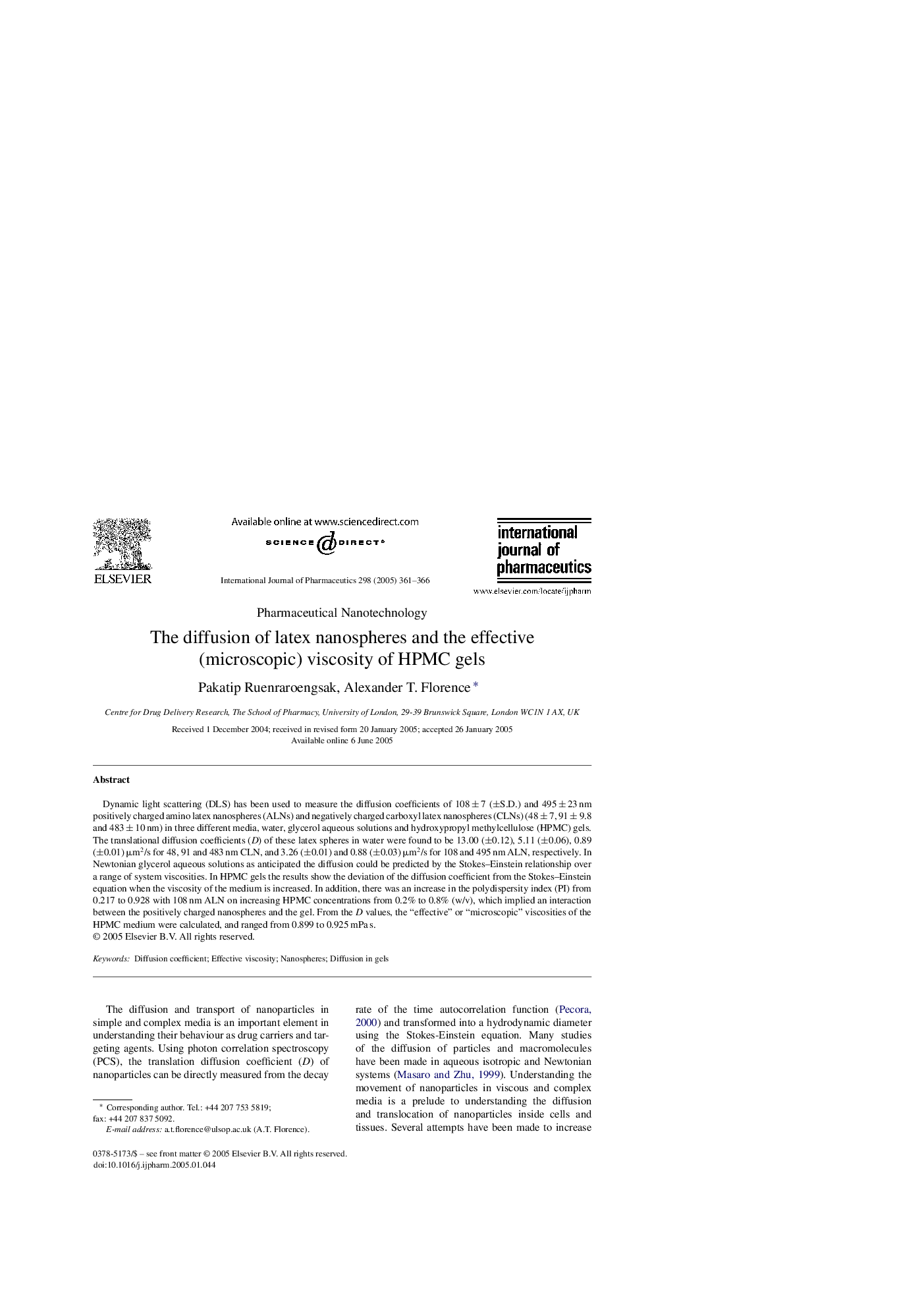| Article ID | Journal | Published Year | Pages | File Type |
|---|---|---|---|---|
| 9918725 | International Journal of Pharmaceutics | 2005 | 6 Pages |
Abstract
Dynamic light scattering (DLS) has been used to measure the diffusion coefficients of 108 ± 7 (±S.D.) and 495 ± 23 nm positively charged amino latex nanospheres (ALNs) and negatively charged carboxyl latex nanospheres (CLNs) (48 ± 7, 91 ± 9.8 and 483 ± 10 nm) in three different media, water, glycerol aqueous solutions and hydroxypropyl methylcellulose (HPMC) gels. The translational diffusion coefficients (D) of these latex spheres in water were found to be 13.00 (±0.12), 5.11 (±0.06), 0.89 (±0.01) μm2/s for 48, 91 and 483 nm CLN, and 3.26 (±0.01) and 0.88 (±0.03) μm2/s for 108 and 495 nm ALN, respectively. In Newtonian glycerol aqueous solutions as anticipated the diffusion could be predicted by the Stokes-Einstein relationship over a range of system viscosities. In HPMC gels the results show the deviation of the diffusion coefficient from the Stokes-Einstein equation when the viscosity of the medium is increased. In addition, there was an increase in the polydispersity index (PI) from 0.217 to 0.928 with 108 nm ALN on increasing HPMC concentrations from 0.2% to 0.8% (w/v), which implied an interaction between the positively charged nanospheres and the gel. From the D values, the “effective” or “microscopic” viscosities of the HPMC medium were calculated, and ranged from 0.899 to 0.925 mPa s.
Related Topics
Health Sciences
Pharmacology, Toxicology and Pharmaceutical Science
Pharmaceutical Science
Authors
Pakatip Ruenraroengsak, Alexander T. Florence,
